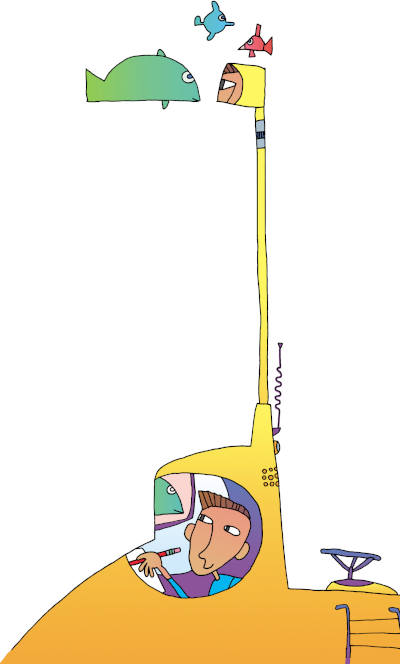
Page 109
Understanding Text Structures
A submarine is designed to carry you deep beneath ocean waves. It gives you a warm, dry, safe space for traveling underwater.
A paragraph is designed to carry ideas to readers. The topic sentence, body sentences, and ending sentences keep ideas organized and safe so that they can travel far and wide.
Different paragraphs use different text structures depending on the topic and purpose of the writing. This chapter details text structures that you can use to convey your ideas.
What’s Ahead
WE 110
Page 110
Common Text Structures
There is not one “official” list of text structures. There are, however, a few that are very common. Here are the ones used most often.
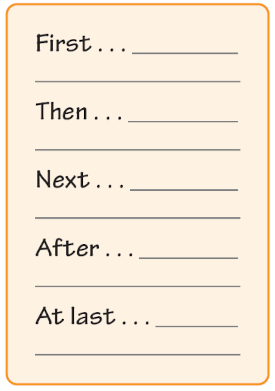
Sequence: Chronological Order 🟪 The chronological structure is organized from one point in time to another. (Use a time line.)
For Christmas, I got a unicycle. Since it was wintertime, I had to learn to ride it in my basement. I started by having my brother hold onto me as I pedaled. Then I realized I could grab onto an overhead I-beam and hold up much of my weight. Over time, I gained balance. By the end of two weeks, I was able to ride short distances without losing control. Within a month, I could ride around the whole basement. That’s all I could do for a while because it was still February!
Cue/Signal Words: not long after, first, then, next, finally, following, during, at last, until, since, when, after, before, as, now, yesterday, tomorrow, Friday, at noon
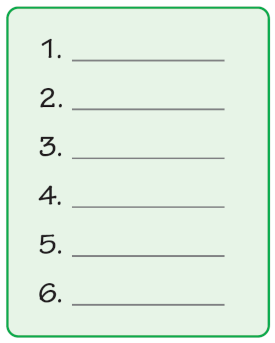
Sequence: Process 🟪 The process structure is organized in a step-by-step sequence.
It’s easy to crack an egg. First, you pick it up in one hand. Next, you bring it down rapidly on the edge of the pan—not enough to smash it. Just crack it. You might have to tap it more than once. Finally, you hold the egg over the pan and open the two sides as if you were opening a book.
Cue/Signal Words: before, after, next, when, as, until, first, following, then, at the same time, finally, during, at last
WE 111
Page 111
Cause and Effect 🟪 In this text structure, the reason something happens is the cause. What happens as a result is the effect. (Use a cause-effect chart.)
Did you know that cyclones above the equator spin counter-clockwise, and those below it spin clockwise? That’s because of the Coriolis effect. Above the equator, winds get deflected to the right because the earth rotates east. So when winds move toward the eye of a hurricane, on all sides they go to the right, or counter-clockwise. South of the equator, the deflection is opposite, and so is the spin.
Cue/Signal Words: because, since, therefore, consequently, as a result, so that, accordingly, if . . . then, one reason for, for this reason

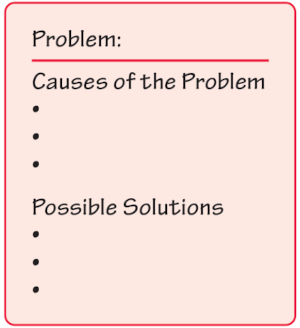
Problem/Solution 🟪 This text structure presents a problem and shows how it can be (or has been) solved.
What would happen if a wildfire burned all the species of one plant away? Or what if an asteroid wiped out a large section of wilderness? Scientists realized that they needed to gather and store seeds so that we could replant after such a catastrophe. For this reason, they created the Svalbard Global Seed Vault on a remote Norwegian island. There they store seeds to safeguard the plants of the world.
Cue/Signal Words: problem, solution, effect, because, therefore, for this reason, consequently
WE 112
Page 112
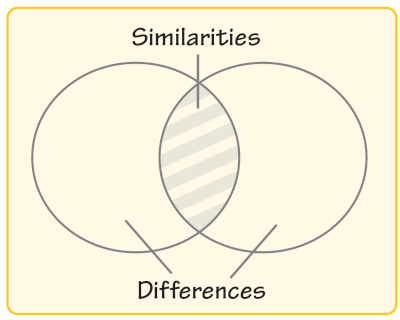
Compare/Contrast 🟪 In this text structure, two ideas, events, or things are compared by showing how they are alike and different. (Use a Venn diagram.)
The United States and Mexico are two nations divided by their tacos. In the United States, tacos most often have ground beef, cheddar cheese, iceberg lettuce, and tomato, in a flour tortilla or a corn hard shell. In Mexico, tacos most often include steak or chicken, crumbly bits of white cheese, onion, and cilantro—all wrapped in two soft corn tortillas. Despite the differences, both types of tacos taste delicious!
Cue/Signal Words: compare, contrast, like, unlike, both, as well as, yet, in contrast, too, whereas, likewise, on the other hand, not only . . . but also, either . . . or
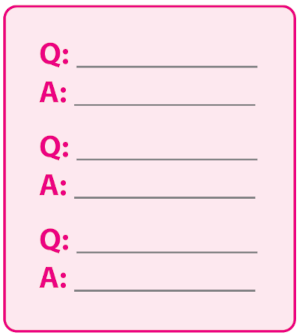
Question/Answer 🟪 In this text structure, a question (or a series of questions) is answered.
Question: What is the world’s oldest tree?
Answer: A bristlecone pine tree in northern California has lived for 4,853 years. The tree known as Methuselah was around when the Egyptians started building the Pyramids of Giza!
Question: What is the world’s tallest tree?
Answer: The world’s tallest tree is Hyperion, a Redwood that stands 380 feet tall. It is in Redwood National Park in California. . . .
Cue/Signal Words: question, answer, could be that, one may conclude, consider, perhaps, the best estimate, who, what, when, where, why, how, how many
WE 113
Page 113
Description 🟪 In a description, language is used to provide details and help readers form images so that they can understand how something looks, feels, sounds, tastes, or smells. (Use a sensory chart.)
The forest murmured with wind through sun-dappled leaves. The sweet scent of pine filled the air. Birds wove a complicated song all around, punctuated by the taps of a woodpecker. A nearby creek gurgled. Its ice-cold water felt good on my hot neck. . . .
Cue/Signal Words: for example, to illustrate, such as, to begin with, above, around, beside, atop, beneath
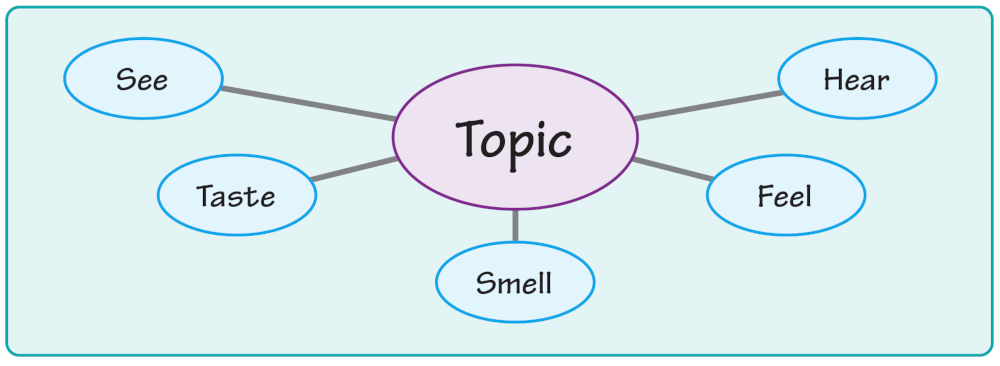
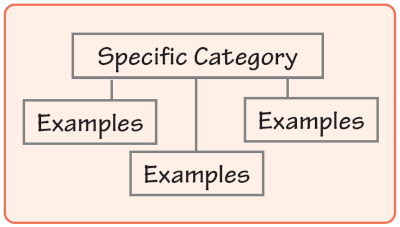
Categorical 🟪 In this text structure, ideas are arranged according to categories or types within a larger topic. (Use a line diagram.)
There are many types of flatbread. Mexico gave us the very flat tortilla and the puffier gordita. Indigenous people gave us Native American frybread. Matzah comes from the Eastern Mediterranean, as do pitas. Naan bread comes from India. Irish folk eat farl, Scots eat bannock, and Norwegians eat lefse. And all over the world, you can find crackers of different shapes and sizes. . . .
Cue/Signal Words: category, types, an example of, many kinds of, parts, groups, characteristics